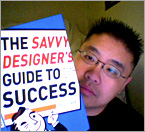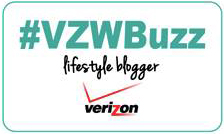Beginners Design Guide: Preparing For The Interview
The past three months, I had a chance to work with two great interns. It was a pleasure walking them through the process of taking a project from the sketch/thumbnail stages to Photoshop mock-up, to print ready art/html/css.
Before their intership ended. I gave them a few tips on preparing for their interviews. I'm sharing the same tips here, in hopes, it may be helpful to other designers just starting out.
I would like to also thank Emily Lewis, owner of A Blog Not Limited, with additions to my list; Any Questions? and Thank You Letter, along with her suggestions.
+ Be Prepared For The Interview - Wear your best clothes: dress, dress shirt, tie, shoes, etc. Be confident, if not, act like you're. Do research on the company before the interview, Google (what they specialize in, what they are about).
+ Brand Yourself - Let employers see you as a brand/product, a total package. Everything should look similar: resume, business cards, leave behind and your portfolio pages.
+ Resume - Don't clutter your resume. It should be designed but not overly designed. Make sure it's simple and easy to access your information.
+ Any Questions? - In most, if not all interviews. You will be asked if you have any questions for them. Be prepared with a few thoughtful questions that show your interest in the job, but also your commitment to your career. Such as: "Can you give me an example of how the team/department works in terms of division of tasks?" Or: "What are the growth opportunities for this position in terms of either job growth, continuing education or both?"
+ Thank You Letter - Never forget to follow-up with a thank you letter (or email, though letter gives a personal touch). Make sure to, obviously, thank the interviewer for the opportunity. But also to reiterate how you can benefit the organization and, conversely, how the organization can benefit you
+ Portfolio - Your portfolio should have between 8-10 pieces of your best work, too many pieces will bore the interviewer. Don't put pieces in you don't like. Make sure you have nice quality printouts. Try to include a wide range of design projects in your portfolio. You can also tailor your portfolio to specific design positions like logo design or web design, only show those pieces.
+ Leave Behind - You may want to create a leave behind promotional piece; postcard or a folder with 3-4 samples of your work, resume and business card. This will keep you in their minds and give an impression that you're willing to take that extra step.
+ Website - Make sure you have a website or a place to display your work with all your information. Also make sure to have different file formats of your resume for potential employers, so they can download: pdf, Microsoft Word document, text file.
If you're not comfortable with building a website yourself. There are many free online web galleries you can upload to, below are a few.
+ Carbon Made
+ Design Related
+ Coroflot
+ Designer ID
+ Flickr
+ Veer
+ Design Hide
+ Behance
+ Logo Pond
Before their intership ended. I gave them a few tips on preparing for their interviews. I'm sharing the same tips here, in hopes, it may be helpful to other designers just starting out.
I would like to also thank Emily Lewis, owner of A Blog Not Limited, with additions to my list; Any Questions? and Thank You Letter, along with her suggestions.
+ Be Prepared For The Interview - Wear your best clothes: dress, dress shirt, tie, shoes, etc. Be confident, if not, act like you're. Do research on the company before the interview, Google (what they specialize in, what they are about).
+ Brand Yourself - Let employers see you as a brand/product, a total package. Everything should look similar: resume, business cards, leave behind and your portfolio pages.
+ Resume - Don't clutter your resume. It should be designed but not overly designed. Make sure it's simple and easy to access your information.
+ Any Questions? - In most, if not all interviews. You will be asked if you have any questions for them. Be prepared with a few thoughtful questions that show your interest in the job, but also your commitment to your career. Such as: "Can you give me an example of how the team/department works in terms of division of tasks?" Or: "What are the growth opportunities for this position in terms of either job growth, continuing education or both?"
+ Thank You Letter - Never forget to follow-up with a thank you letter (or email, though letter gives a personal touch). Make sure to, obviously, thank the interviewer for the opportunity. But also to reiterate how you can benefit the organization and, conversely, how the organization can benefit you
+ Portfolio - Your portfolio should have between 8-10 pieces of your best work, too many pieces will bore the interviewer. Don't put pieces in you don't like. Make sure you have nice quality printouts. Try to include a wide range of design projects in your portfolio. You can also tailor your portfolio to specific design positions like logo design or web design, only show those pieces.
+ Leave Behind - You may want to create a leave behind promotional piece; postcard or a folder with 3-4 samples of your work, resume and business card. This will keep you in their minds and give an impression that you're willing to take that extra step.
+ Website - Make sure you have a website or a place to display your work with all your information. Also make sure to have different file formats of your resume for potential employers, so they can download: pdf, Microsoft Word document, text file.
If you're not comfortable with building a website yourself. There are many free online web galleries you can upload to, below are a few.
+ Carbon Made
+ Design Related
+ Coroflot
+ Designer ID
+ Flickr
+ Veer
+ Design Hide
+ Behance
+ Logo Pond
Labels: Behance, Branding, Carbonmade, Coroflot, Design, Designerid, Designhide, Designrelated, Flickr, Intern, Interview, Student, Veer




leaving a business card could be a nice touch never thought about that, it suddenly makes sense, good tips.
Posted by Anonymous |
September 22, 2008 5:16 PM
Anonymous |
September 22, 2008 5:16 PM
can someone show me some examples of well designed resume...not like the normal word type...
Posted by Anonymous |
September 22, 2008 7:14 PM
Anonymous |
September 22, 2008 7:14 PM
Great list. A few more tips that have helped me over the (many) years:
1) Be prepared with a few thoughtful questions that show your interest in the job, but also your commitment to your career. Such as: "Can you give me an example of how the team/department works in terms of division of tasks?" Or: "What are the growth opportunities for this position in terms of either job growth, continuing education or both?"
2) Never forget a follow-up thank you letter (or email, though letter gives a personal touch). Make sure to, obviously, thank the interviewer for the opportunity. But also to reiterate how you can benefit the organization and, conversely, how the organization can benefit you.
Posted by Anonymous |
September 23, 2008 4:46 PM
Anonymous |
September 23, 2008 4:46 PM
Nice list of virtual gallery resources, Calvin. THANKS!
Posted by Anonymous |
January 09, 2009 3:59 PM
Anonymous |
January 09, 2009 3:59 PM
Excellent post. I'd also add VisualCV (visualCV.com) to the list of options for free online resume/portfolio building.
Posted by r armstrong |
March 29, 2009 3:10 PM
r armstrong |
March 29, 2009 3:10 PM
The post is written in very a good manner and it entails many useful information for me. I am happy to find your distinguished way of writing the post. Now you make it easy for me to understand and implement the concept. Thank you for the post.
Posted by Logo Design Company |
August 09, 2011 11:17 PM
Logo Design Company |
August 09, 2011 11:17 PM